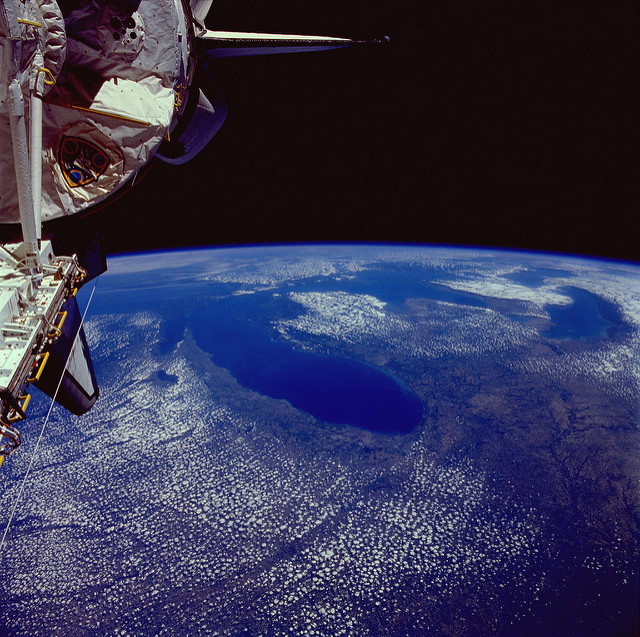
For Bryan O’Connor, commander of the space shuttle’s first dedicated life sciences mission, the key concern on STS-40 was not that his flight was the first in history to feature three women, but the first in history to include three medical doctors! Twenty-five years ago, this week, O’Connor and his crew—Pilot Sid Gutierrez, Mission Specialists Jim Bagian, Tammy Jernigan, and Rhea Seddon, and Payload Specialists Drew Gaffney and Millie Hughes-Fulford—launched aboard Columbia for a nine-day voyage which comprehensively examined how the bodies of humans, animals, and fish were influenced by the strange microgravity environment.
And for the “core” science crew of Seddon, Bagian, Gaffney, and Hughes-Fulford, their involvement with the first Spacelab Life Sciences mission (SLS-1) extended back for the better part of a full decade. A complement of Payload Specialist candidates—cardiologist Gaffney, biochemist Hughes-Fulford, physiologist Bob Phillips, and biophysicist Bill Williams—had been selected by NASA in January 1984 for a flight which, in the pre-Challenger era, was timetabled to occur sometime in 1986. A few weeks later, on 2 February 1984, NASA announced the names of physicians Seddon and Bagian, together with astronaut John Fabian, to join the crew. They were later joined by Commander Vance Brand and Pilot Dave Griggs, and, in April 1985, Gaffney and Phillips were identified as the two “prime” Payload Specialists. Their “Mission 61D” aboard Columbia was targeted for January 1986, and its life sciences payload was initially known as “Spacelab-4.” By the time Challenger was lost in January 1986, its launch date had slipped to March 1987. And in the aftermath of Challenger, it was renamed “Spacelab Life Sciences.”
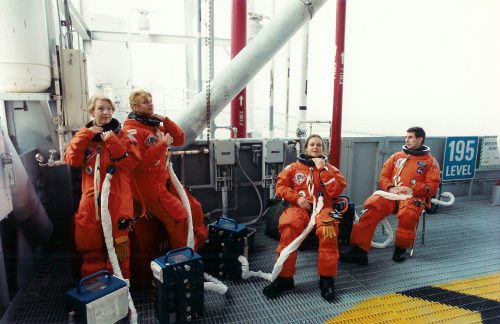
Before Challenger, neither Seddon or Bagian had much time to commit to the mission. Seddon did not fly her first shuttle mission until April 1985, and Bagian was still in training for what would have his first flight—Mission 61I, then manifested for September 1986—at the time of the 51L tragedy. “I did what I could,” Seddon later told the NASA oral historian, “but it was all kind of a scramble, because I didn’t have much time to devote to it.” By her own admission, the payload “was very over-subscribed,” with “too much to do, too many experiments, too much crew time required.” Animal holding facilities, meant to accommodate laboratory rats, had performed poorly on a previous mission, and in the post-Challenger effort to get the shuttle fleet back to operational status the first dedicated life sciences flight was of low priority.
Eventually, in February 1989, Seddon and Bagian were named to the “new” SLS-1 mission, then planned for STS-40 and targeted to launch in June 1990. “It was time for us to get back together and nail everything down,” Seddon said of the first few months after assignment, “the timeline, the equipment, what we could do, what we could sign up to do.” By this time, Williams had long since resigned from the mission and the prime Payload Specialist slots were assigned to Gaffney and Phillips, with Hughes-Fulford backing them up. Unfortunately, a medical problem grounded Phillips in 1989 and Hughes-Fulford was reassigned to take his place. By this time, NASA had also named Commander Bryan O’Connor, Pilot John Blaha, and Mission Specialist Tammy Jernigan, thus making STS-40 the first spaceflight in history to feature as many as three female crew members. Sadly, in June 1989, Blaha was removed from the mission and reassigned to STS-33, following the untimely death of another astronaut in an aircraft accident. His place on the STS-40 crew was taken by Sid Gutierrez, who went on to become the first and only person of Hispanic descent to pilot—and later command—the shuttle.
When Hughes-Fulford came aboard, O’Connor was once asked by an interviewer if he was “afraid” of having three women on the flight. “No,” the straight-laced Marine Corps colonel replied, “I’m more worried about having three doctors on the flight!”
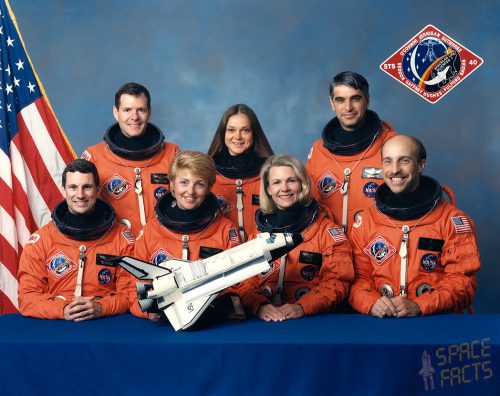
O’Connor’s humor masked a real concern about the compatibility of members of his crew—in particular, his Payload Specialists. After the medical disqualification of Phillips, the arrival and involvement of Hughes-Fulford was far greater than it had been previously. This caused friction with Gaffney. “Sometimes,” O’Connor told the NASA oral historian, “I’ve thought that Millie and Drew were like oil and water and it was a pleasant surprise for me when, seeing how they operated or didn’t operate together in the office or after the training’s done or whatever, to where they would take all that baggage, old concerns with one another’s performance, disagreements about the science, and we’d get into the simulator and there was none of that. These two trained like two professionals.” Yet when the pair left the simulator, O’Connor compared their relationship to the 19th century feud between the Hatfields and the McCoys. In her NASA oral history, Seddon agreed that there was “some stress, just some frictions” in the crew relationship.
From his position as the mission commander, O’Connor found this worrisome. He was concerned that, should some of their “underlying issues” affect work in space, during a critical time, it might affect their ability to get the job done. As a Marine, he had done much of his training and flying in single-seat aircraft and compared his fears to those of a bomber pilot or transport pilot, trying to get crews to work effectively together. O’Connor concluded that the seven of them should sit down and do a personality assessment, very similar to the Myers-Briggs psychometric test. This revealed that, unlike the military, in which two or three of around half a dozen personality types tend to dominate the rest, the shuttle crew featured much broader range and demanded a broader understanding. “You’ve got to be a little more forgiving of certain things,” O’Connor reflected, “and be more sensitive to other things to communicate properly and to operate as a crew.”
The personality assessment enabled them to smooth the road to a much better working relationship. “I think everybody just assumed that everybody would get along,” remembered Seddon. “Sometimes that’s hard to do, especially when you’ve been training together in close quarters for a long time. Everybody has their little quirks.” By the time STS-40 closed in on its launch in June 1991, O’Connor was more than satisfied that his crew would work like an oiled machine. And STS-40—whose bus-sized Spacelab module was packed with apparatus for 18 major medical investigations—would be one of the most complex research flights ever staged by the space shuttle.
The second part of this article will appear tomorrow.
Want to keep up-to-date with all things space? Be sure to “Like” AmericaSpace on Facebook and follow us on Twitter: @AmericaSpace




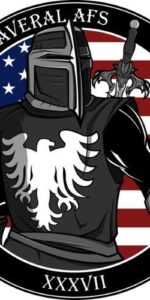
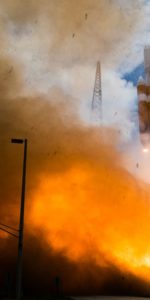
That was a fascinating mission to work on, I worked in the POCC for that mission and worked with the crew very closely. It will be interesting to read the second part of this and see if some of the weird things are mentioned – like the combination lock on the mid-deck hatch that Bryan insisted on. There were few missions that flew with that lock in place.